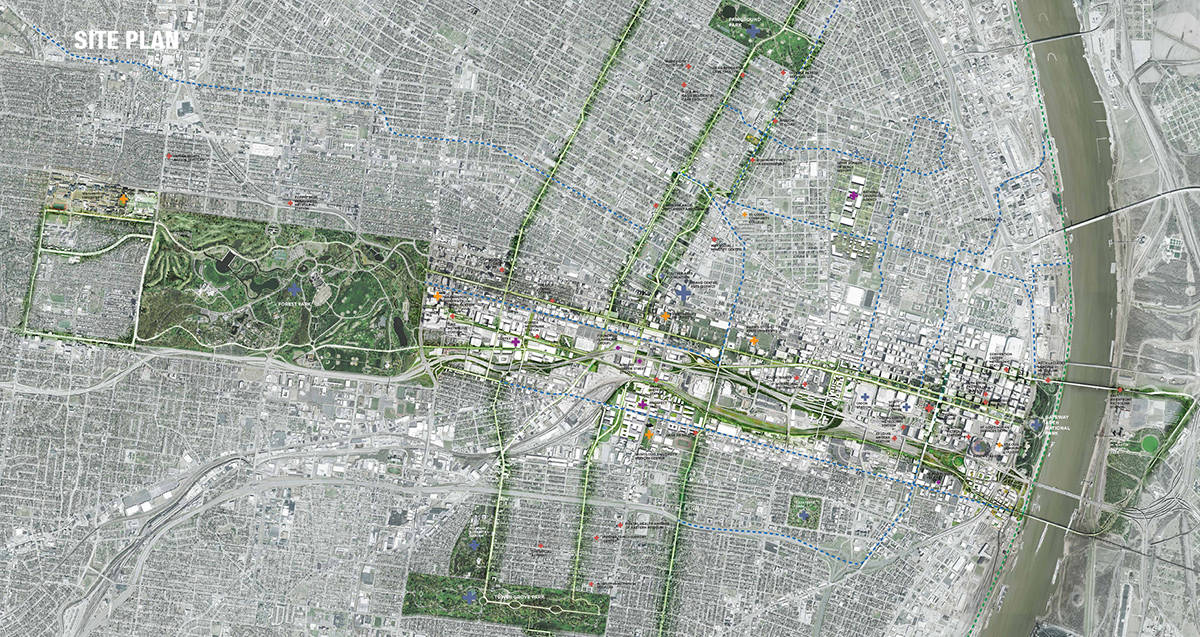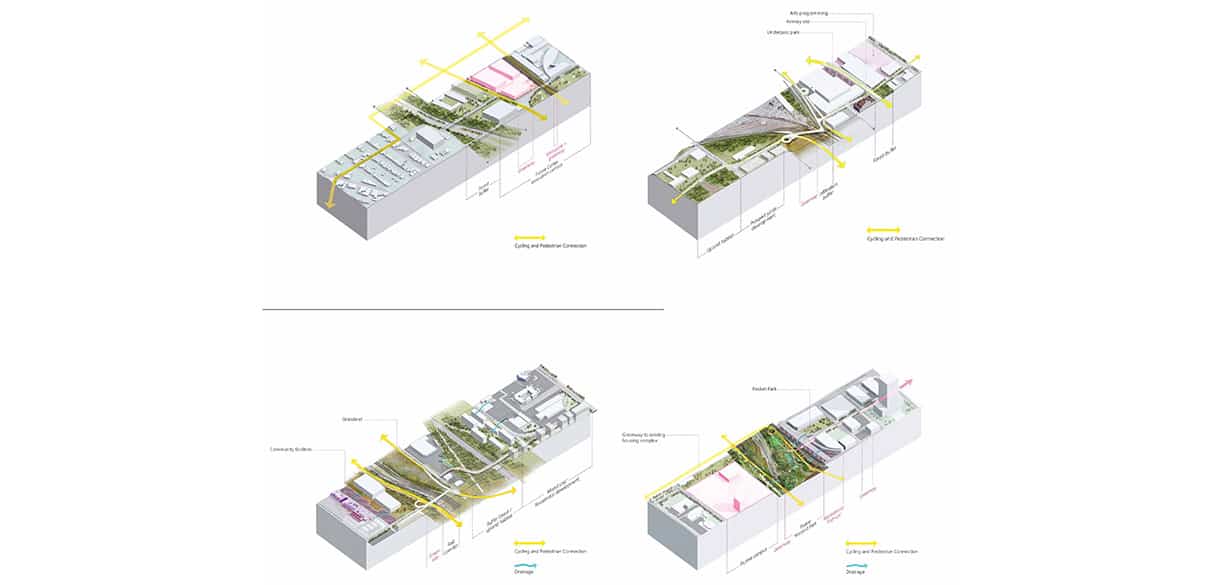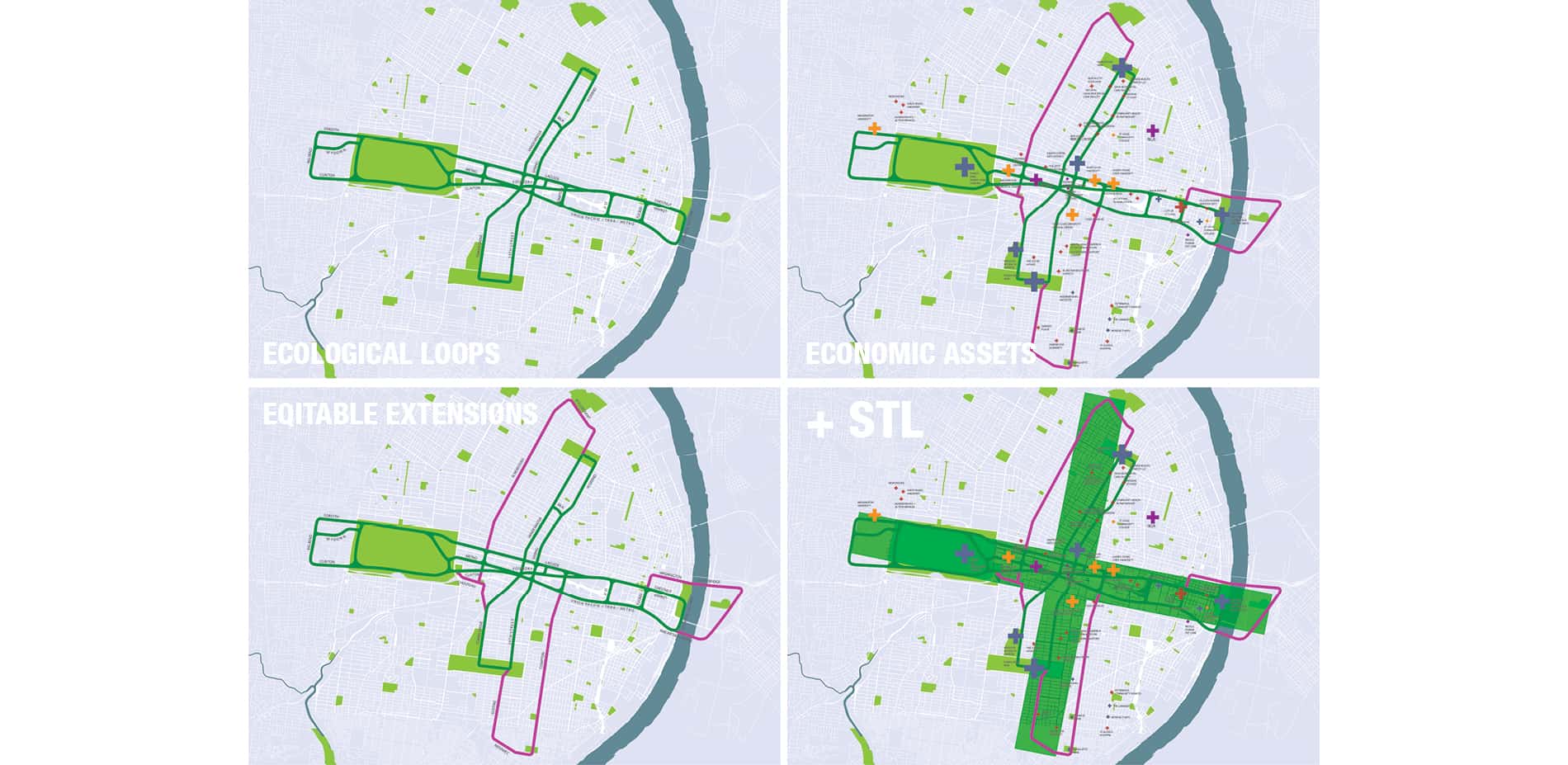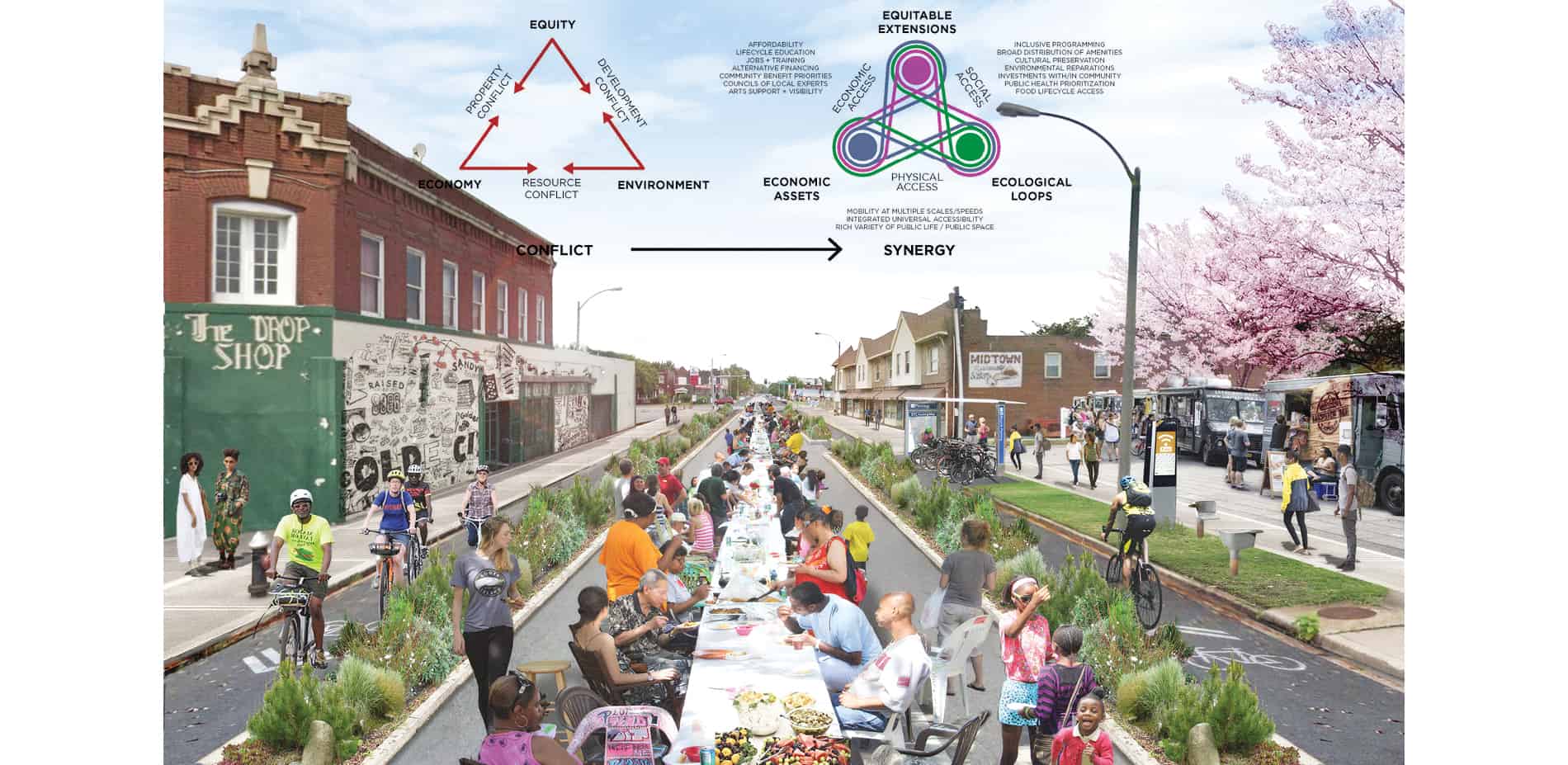Asked by the Great Rivers Greenway (GRG) to envision an urban greenway in the heart of St. Louis between Forest Park and the Gateway Arch, this masterplan follows in the spirit of GRG’s citizen-involved approach and embraces a multi-functional, inclusive, and resilient approach that ties together currently isolated parks, neighborhoods, and cultural, social, and economic assets. The plan, a competition finalist, invests in public space and landscape strategies to overcome barriers caused by a tangle of 20th-century infrastructure, from freeways to rail lines to highway interchanges. Rooted in values of inclusion and sustainability, and with respect for St. Louis’ storied institutions, this flexible greenway strategy knits together the urban fabric for a future that is economically sound, environmentally responsible, and socially unifying.
The masterplan proposal, “+StL”, envisions a resolution that connects and restores the landscape, the existing communities and the transportation systems by investing in the communities, existing assets, and unique projects underway around this corridor. The team was assembled on this principle and includes local experts, leaders, and advocates as well as designers, planners, engineers, and advisors with international experience, each committed to a team-wide design and decision-making process. The resulting masterplan proposes concrete measures to address the challenges of equity, public health, and mobility through a layered strategy of three components: Economic Assets, Ecological Loops, and Equitable Extensions.
Economic Assets involves the strategic reconnection of several main centers, higher education institutions, Grand Arts District, and emerging tech industries that are able to attract early investment. Investment capital follows talent, and talent increasingly follows place. The most dynamic and valuable places embrace diversity and inclusion, a mix of uses, and offer opportunities for connection and fun. From Washington University and Forest Park, through Cortex, Grand Center, Saint Louis University, and Downtown, the Greenway will provide a new public realm and connective tissue through and across the center of the city. Enhancing access to these existing assets with a new, well-programmed greenway network can support the surrounding real estate market and attract new residents, companies, and investment.
Ecological Loops were created by analyzing the hydrology of the central corridor. The low railway basin is opened up to intercept stormwater and reestablish native communities of prairie, woodland, riverside, and wetland. Tallgrass prairie habitat, reclaimed from parking lots and storage yards will support local floral and faunal biodiversity and provide appropriate habitat for migrating birds. Active urban forest and prairie along the Greenway will provide important ecosystem and cultural services to the St. Louis area. Emerging habitats can be explored over boardwalks, trails, and bridges beside wetlands and drainage ways, reducing the barriers that prevent residents from enjoying nature in the city.
Beyond the low central corridor, the Ecological Loops constitute the green hydrological infrastructure to expand pervious ground and draw habitat corridors between the four major parks in St. Louis. The West-East route from Forest Park at Clayton Avenue and the Metro-Link line along the Union Pacific Railyard to Chouteau’s Landing allows a new experience completely unique to St. Louis, integrating woodlands, streams, and wetland ecologies with St. Louis’ industrial railroad. The North-South loops connect Fairground Park, Tower Grove Park, the Missouri Botanical Garden, and the neighborhoods in between them with the central East-West Greenway, providing vital neighborhood access and habitat corridors for improved environmental health and biodiversity.
Equitable Extensions involves a concomitant investment in the areas north and south suffering from higher poverty rates, environmental pollution, poorly functioning infrastructure, and negative health indicators. Our plan also proposes realistic strategies that would expand and ensure equity among the various communities affected by urban regeneration. Extensions begin with a team that includes individuals who have worked as organizers and advocates for these communities for many years. The proposed extensions to the North along Newstead and to the South along Compton will grow the neighborhoods such as The Ville, Penrose, and O’Fallon in the North and Gravois Park, Tower Grove South, and Dutchtown in the South. Extensive analysis was done to find ways to improve street cross-sections to add lighting, bike lanes, traffic calming measures to make these places safer for pedestrians. Likewise, our planners studied existing and planned transport networks and proposed expansions and improvements to public transit frequency and extension.
Through loops, extensions, and assets, the +StL Greenway will build new experiences and create new value throughout the city, working from the rich systems already embedded in St. Louisan life. Our plan gives the city, developers, and community groups a framework of tactics for distributing development, introducing biodiversity and undoing hard water infrastructures, and planning for unbroken access to jobs, institutions, and public space throughout the city.







